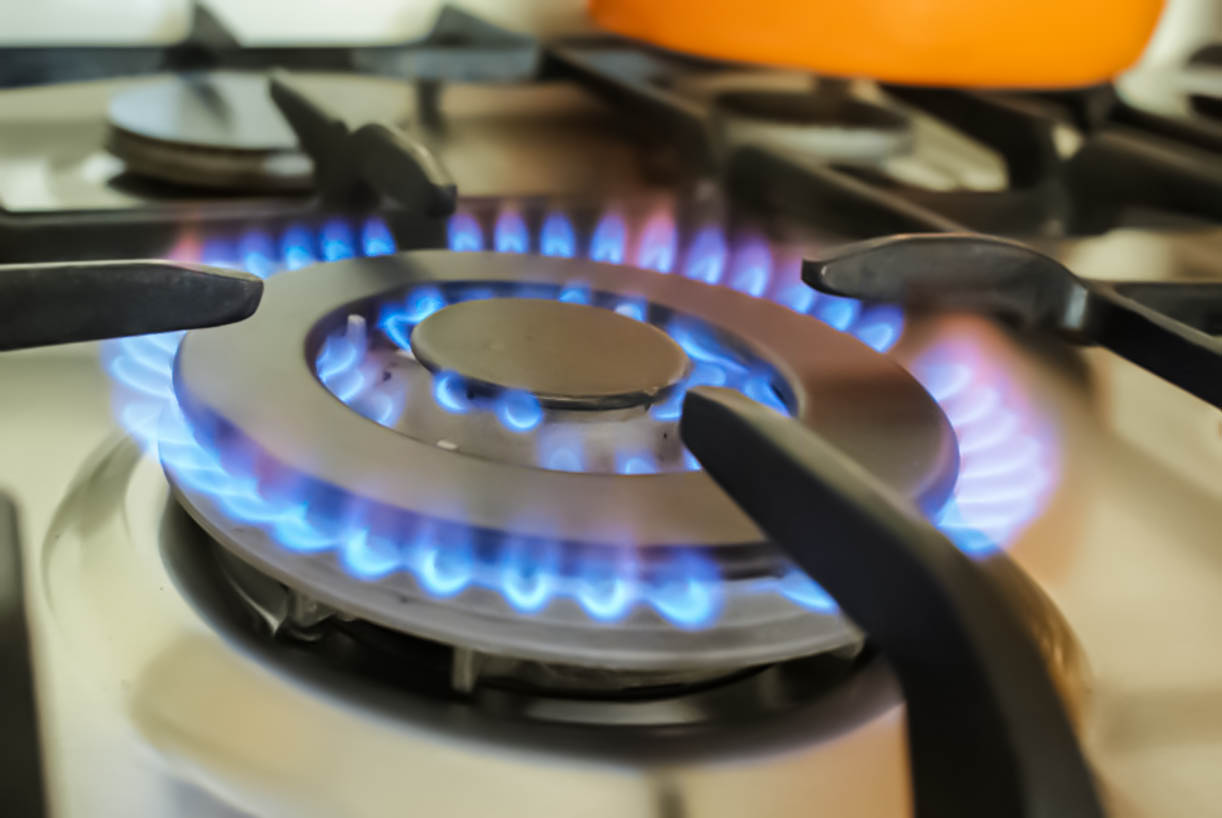Cooking with a gas cooktop is everybody’s preferred way to cook. If you’re converting from electric to gas, or even if you’re just replacing new for old, it can be difficult to find a new cooktop that fits neatly into the old hole. You can take two different approaches to dealing with that. The most common approach is to find a new cooktop slightly larger than your old one and enlarge the hole. The other approach is to use a stainless steel patch to cover the bench and thus the hole.
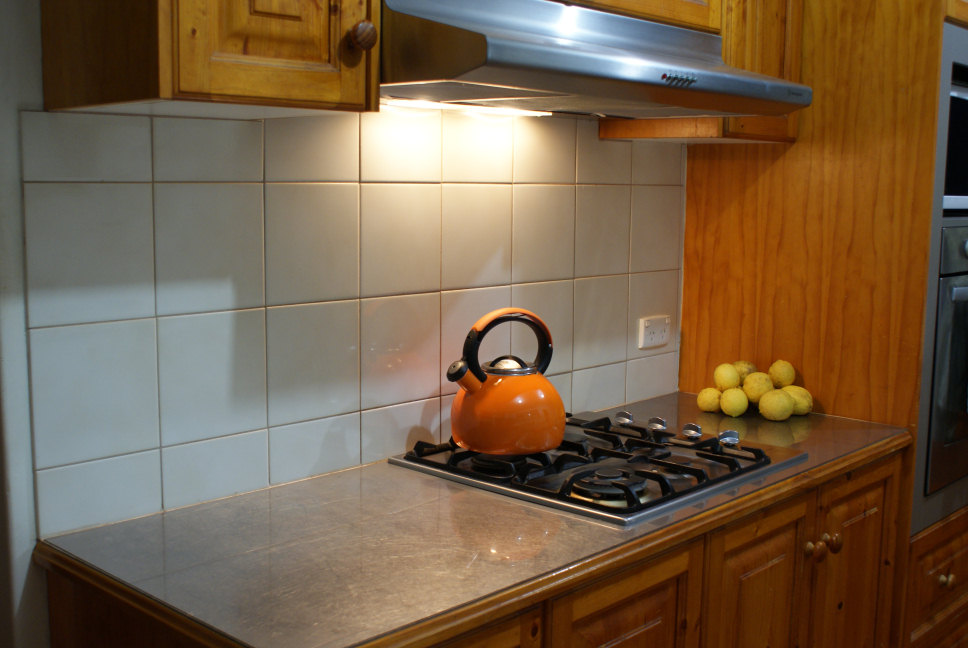
A stainless steel patch covers a hole in the bench beside this cooktop but you don’t have to cover the whole bench like I’ve done here.
The hole in the bench is the first thing you might consider but another is how to get gas to the appliance. The most common method of routing pipe to the cooktop is to come down (or along) the outside wall and then through the wall into the kitchen cupboard. Sometimes a brick veneer house will allow pipework to be routed through the brick cavity and then through the gyprock and into the kitchen cupboard. It is usually practically impossible to take that approach on a double brick house because of brick ties and mortar dags in the cavity restricting access.
Sometimes the cooktop is not on an external wall or even adjacent to one. In this case it is necessary to route pipe down the internal wall where the cooktop is located (if coming up from under the floor is not optional and it usually isn’t). You really want to be dealing with a frame wall rather than a brick wall if you’re coming down this track. Of course, nothing is impossible but chasing brick and making good to it again is going to be a lot more work than opening gyprock and making good to plaster and paint. Here’s a picture of a job where I had to bring gas pipe down an internal wall to supply the cooktop with gas.
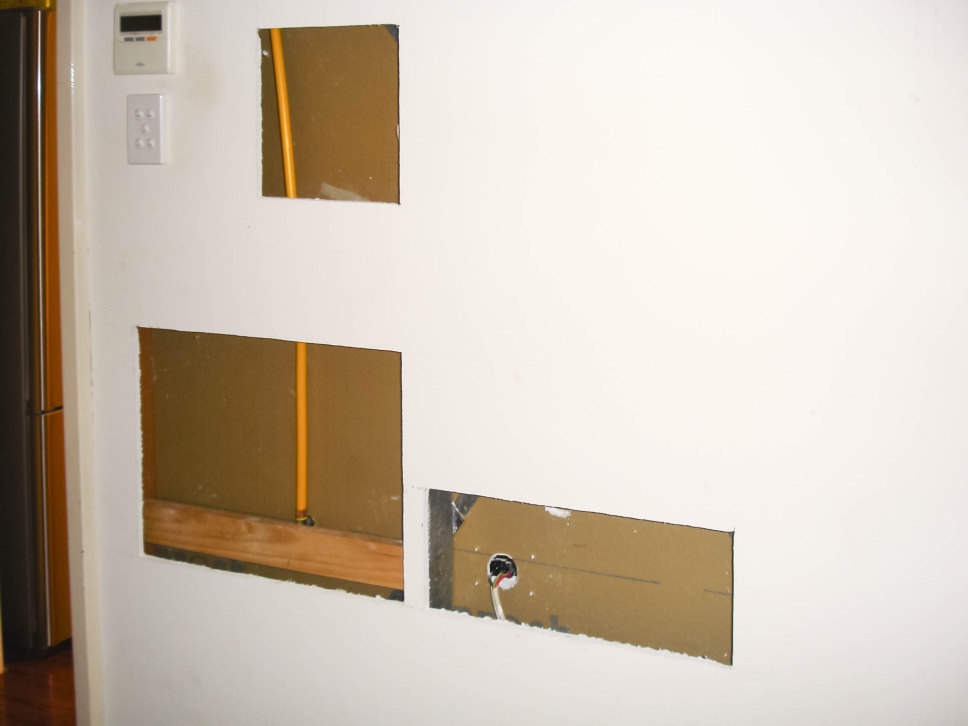
Neat holes makes reinstating easier and planning neat holes avoids making more holes than necessary.
In the picture above, you can see the back of a power outlet. If you’re converting from electric to gas, you’ll need to have your existing cooktop disconnected (before your gasfitter arrives), and a power outlet installed for the new cooktop to plug into. The power connection only powers the spark ignition. In the event of a power outage, you can use a barbecue lighter or similar to light your burners.
The Australian gas installations code requires gas pressure regulators to be installed “in a safe location and … readily accessible for maintenance and adjustment” AS 5601.1:2010 clause 2.4.8.
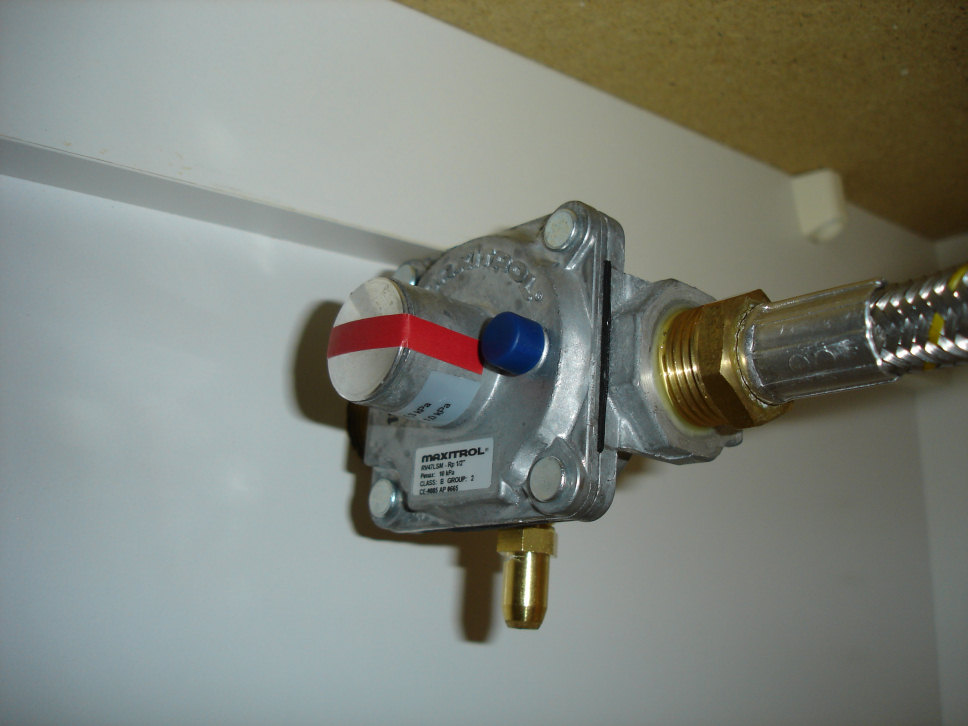
Every natural gas appliance is to be installed with a gas pressure regulator in an accessible location to comply with the national gas installations code AS 5601.
If you’re buying an ex display model, make sure you get your appliance regulator with it. It’s easy enough to replace a missing one but it’s obviously going to cost you extra. In my experience that’s the number one missing item when customers purchase ex display appliances so make sure it’s in the box (or they need to sell the appliance even cheaper!).
Don’t DIY your cooktop installation. Hire a gasfitter and get a certificate of compliance for the installation.
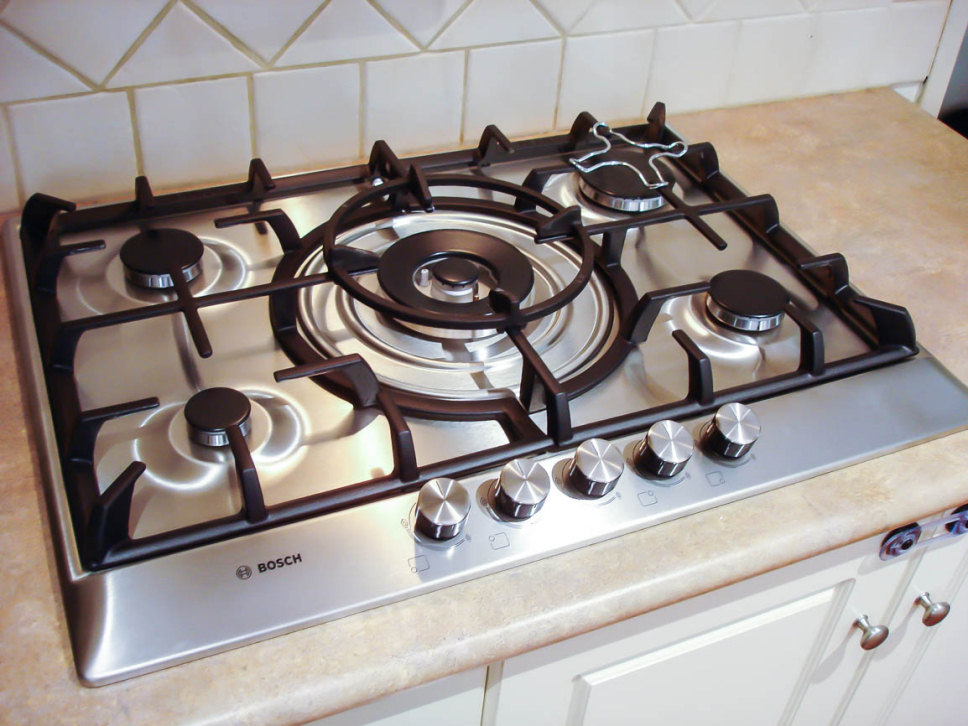
Happy cooking!
Feel free to post any questions you might have using the comment form below.

